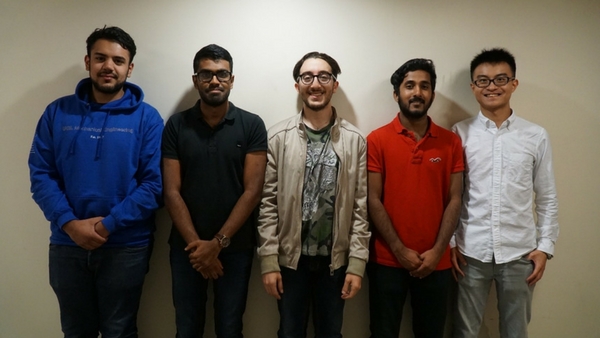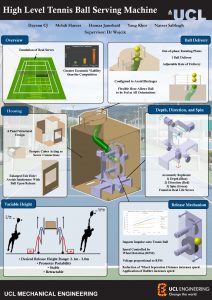High-Level Tennis Ball Serving Machine

The team behind the High-Level Tennis Ball Serving Machine project
Team Members
- Dayann Charles Jeyamohan
- Ahamed Harees
- Mohammad Jamshaid,
- Yang Khor
- Nasser Sabbagh
Supervisor
The Project
The aim of this project is to produce a design for a tennis ball machine that accurately emulates serves seen in the game of tennis.
Aspects of the serve that require replication include:
- high speed of release,
- variations in spin
- variations in landing position in the opposition service box.
In addition, the design will incorporate different release heights to reproduce the range of release points seen in tennis, as a result of player height, arm span, jump height etc.
In order to make the design more complete and marketable, we also considered the implementation of player feedback, a fully-integrated control system for ease of use and pre-shot warning systems.
The Design
We used a dual-wheel configuration as the release mechanism to apply speed to the ball and eject it from the machine. Spin and landing position variations were achieved by using a three degree-of-freedom pivoting bracket system. We tackled the variation in release height usinga cascading lift design, produced through VEX (metallic building block platform) as proof-of-concept. The release mechanism was housed in a Perspex casing which allowed freedom of movement and minimal interference with the ball on release, whilst also incorporating an integrated ball feeder mechanism.
 Close
Close


